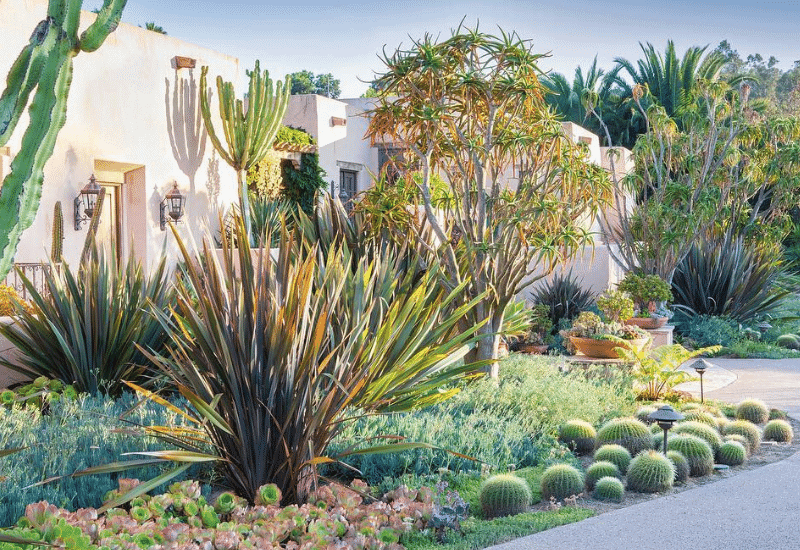
Most succulents are slow growers, but they can reach great heights over time, and become towering plants in gardens and parks.
In fact, the tallest of them all is a cactus, Cereus peruvians, which measures 110 feet (33.5 meters) in Dharwad, India.
But even excluding cacti, agaves, yuccas like the Joshua tree and Eve’s needle can grow past your fence. Then again, a baobab is not actually a tree, but a massive succulent if you really want size!
If you need a vertical dimension and you love these fleshy and exotic plants, we have found a fair few tall succulents types that will work just fine. And because it’s easy to find tall cacti, we left them out and focused on other tall growing succulents.
Surprised to meet famous names but you did not think they were succulents? Let’s see them all then!
Read Next: Houseplants That Grow Tall and Make a Big Statement
Here are 12 of our favorite tall succulent plants that can grow to great heights in your home.
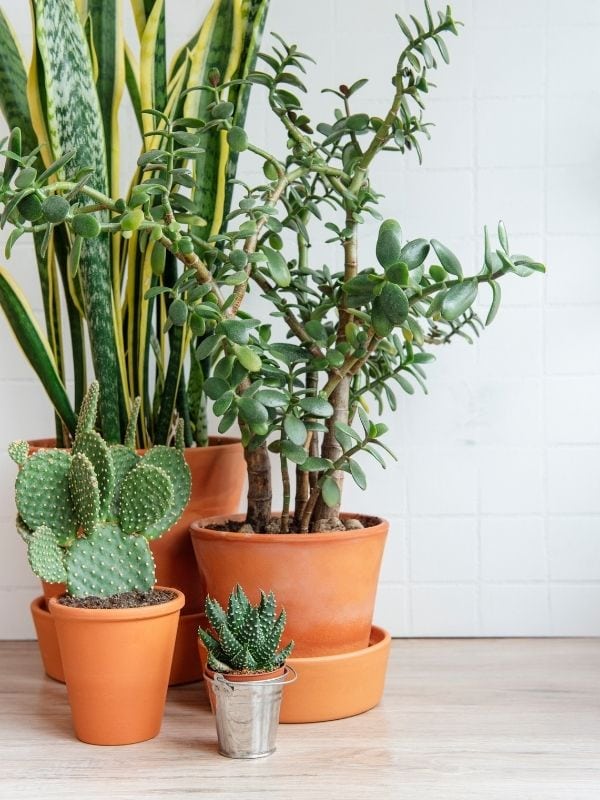
1: Mother of Millions (Kalanchoe delagoensis, a.k.a. Kalanchoe tubiflora or Bryophyllum delagoense)
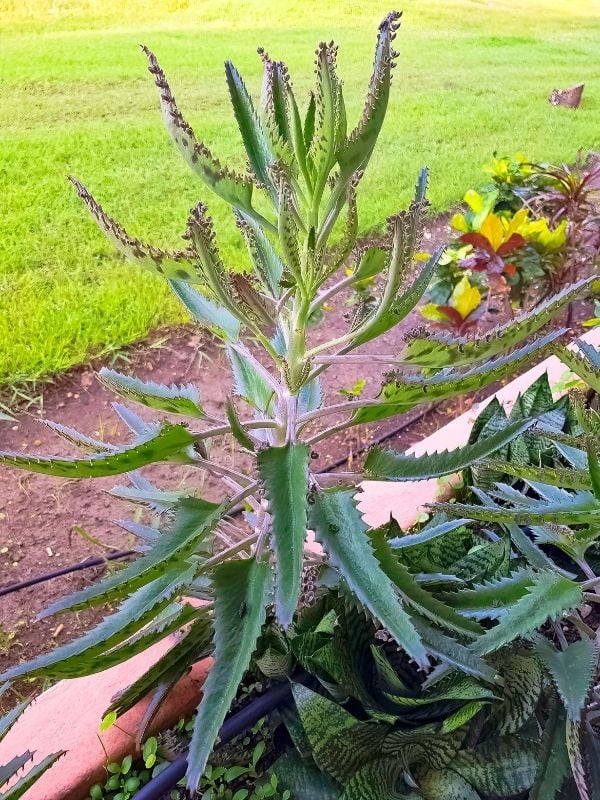
Mother of millions is an extraordinary succulent that can grow taller than a man, up to 7 feet tall (2.1 meters) but only 3 feet in spread (90 cm); it can have more children than a thousand women put together.
Its name comes from the fact that each leaf fills with lots of tiny pups or offset, that fall to the floor and become tiny new plants.
But it also has other original points. The foliage and stalks have color pattern of greens, browns, violets, grays, purples and blues…
Mixed like in a Monet painting, and changing all the time according to sunlight intensity! Bright and showy orange nodding and bell shaped flowers come in clusters above the plant, and this can happen any time of the year.
Mother of millions grows fast unlike other succulents; it is also short lived, two years or a few more.
But it reproduces at very high speed, and for this reason, it is also very invasive. However, it is a real beauty, wonderful in clumps or for borders in xeric, desert, exotic and Mediterranean gardens.
2: Candelabra Spurge (Euphorbia ammak ‘Variegata’)
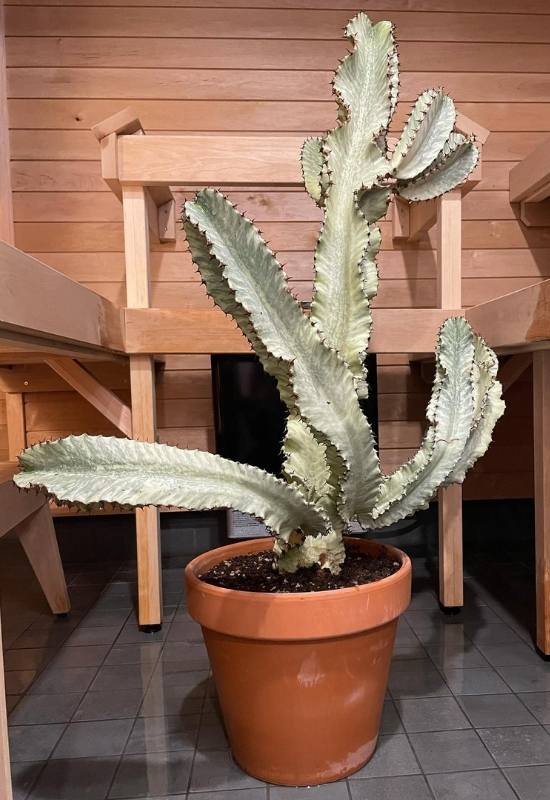
Candelabra spurge has the cactus look and the cactus height, in fact up to 20 feet (6.0 meters) and 8 feet in spread (2.4 meters), but it’s not a cactus…
It has thin and long trunk and branches with spikes at the rims of the deep ribs. These look very much like long candles growing towards the sky.
The surface has a very smooth, marble or wax like surface, with a light blue green color. Though it can have some golden reflexes in it. This contrasts with the dark brown spikes on the four wings of this slender giant.
While most Euphorbia species are generous bloomers, candelabra spurge won’t unless it’s in its natural environment.
Still, its great sculptural value is a real asset for dry, coastal Mediterranean and desert gardens.
3: Joshua Tree (Yucca brevifolia)
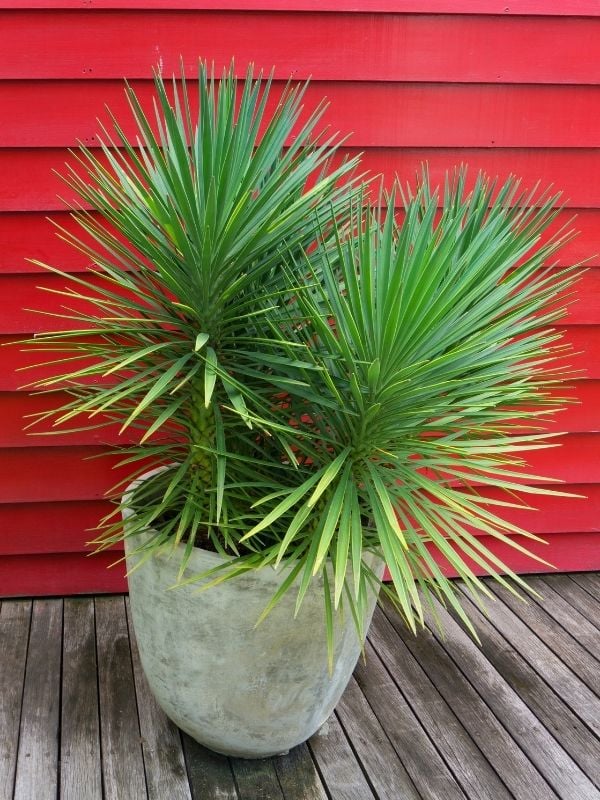
Joshua tree is a succulent that needs lots of space, both in height and spread, in fact it can reach 30 feet in height (9.0 meters) as well as in spread.
Its stalks preserve the short dried leaves, so it looks like it has a fur coat on. The main stem branches off into decorative and softly twisting thick “arms” that end with green and pointed leaves.
They look like cheerleaders in the desert! The flowers come in spring with huge panicles of white flowers; unfortunately the need a specific moth to pollinate, so it won’t away from Arizona, California, Nevada or Utah.
You can make a bold statement with Joshua tree in a desert, gravel, even urban garden, thanks to its iconic shape and formidable size! It is also easy to propagate by rhizomes, stem cuttings and offsets.
4: Century Plant (Agave americana)
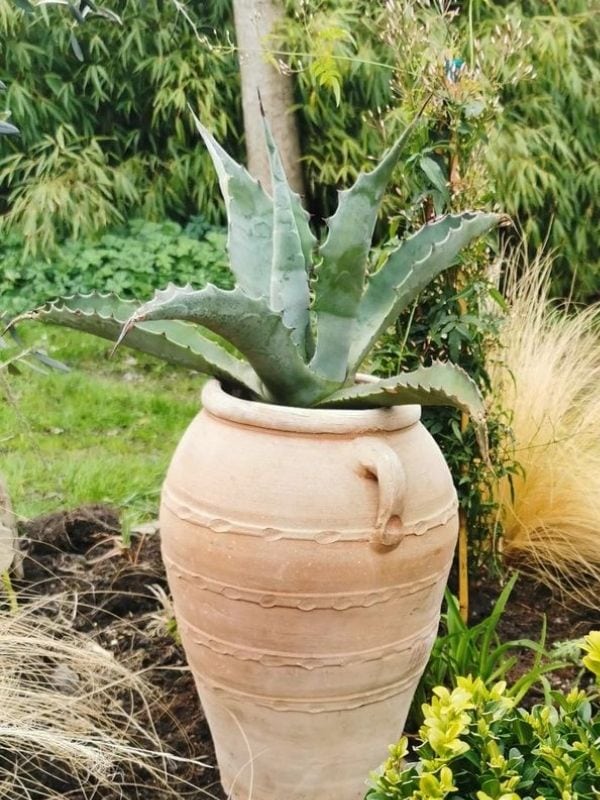
Century plant will stay comparatively short till the end of its days, when it will suddenly grow into a tall giant, reaching 30 feet into the sky (9.0 meters) and only 8 across (2.4 meters).
This agave is common and famous for its silver blue pointed leaves that form a round and wide rosette. They will stay so, with an almost spherical but decorative shape for decades on end…
But then, suddenly, you will see a long stem grow above it, and quickly too. This is called quiote, and it is the flower stem.
All the yellow blooms will grow like on side steps at the top of this thin and long stalk, which can reach 24 feet in height (8.0 meters)!
When the blossom is spent, the quiote will break and fall, and the plant will die. But before doing so, it will produce many offsets at the base for you to propagate.
Century plant is like an unchangeable loving statue for most of its life; its slow growth and very visible impact are great in gravel, urban, coastal, Mediterranean, desert and other types of gardens.
The final spectacle is an event, a glorious end to the life of a real queen of gardens, and winner of the Award of Garden Merit by the Royal Horticultural Society.
5: Sticks on Fire (Euphorbia tirucalli)
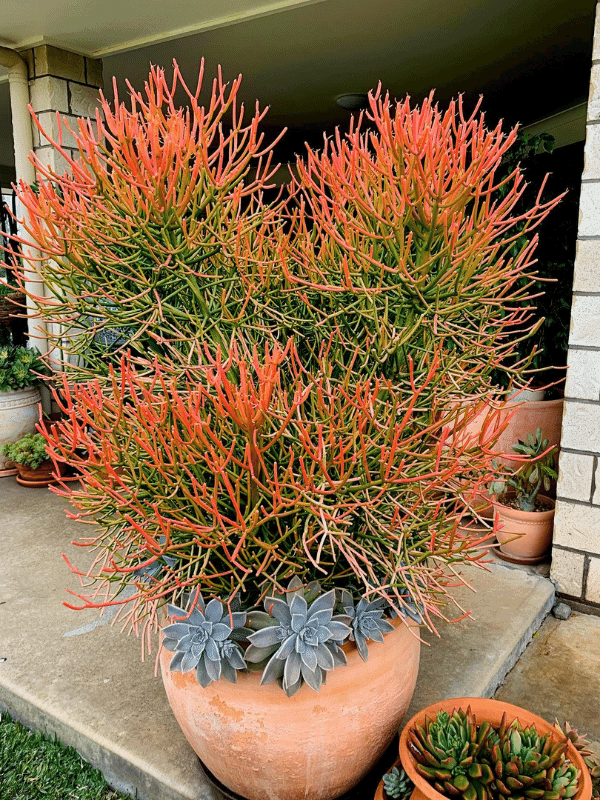
Long and thin sticks on fire that grow up towards the sky are a surprising sight in any garden: in the right conditions, it can climb to 30 feet (9.0 meters) while it is only 8 feet in spread (2.4 meters).
And this Euphorbia looks like this, or if you want a coral that grows out of the sea… The thin, waxy and long stems usually start off emerald green at the lower levels.
But as they branch off into more and more “sticks” they turn fiery red and orange. The color is stronger in winter.
While you can keep this succulent as a short shrub for hedges and beds, if you let it grow, it will soon become taller than you or any basketball player.
Sticks on fire is ideal for a surreal garden, even a marine theme, but really in rock gardens, gravel gardens or in borders it can bring color, interest and texture as well. The flowers are inconspicuous, but you won’t be needing them!
6: Spineless Yucca (Yucca elephantipes)
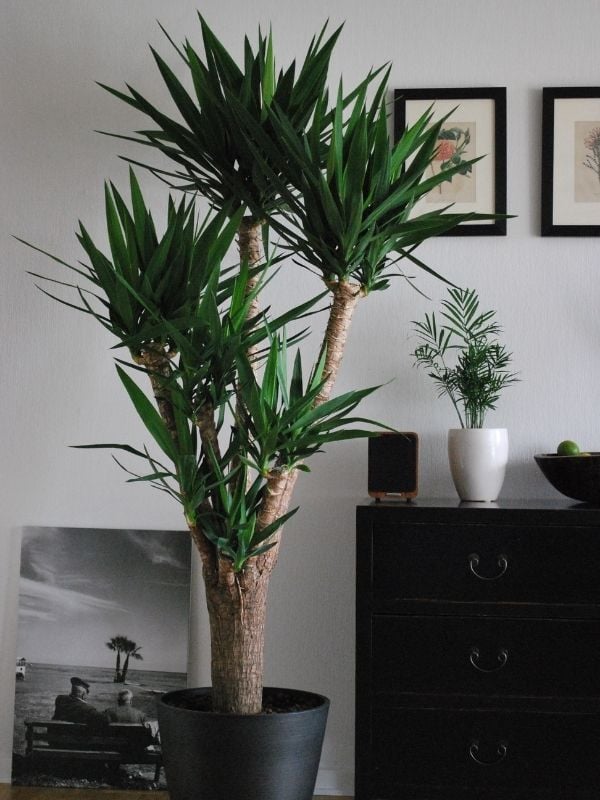
Spineless yucca grows to the height of a small tree from a large stem that looks like the foot of an elephant, hence the name.
This will split off into smaller and still upright branches that end in large, decorative rosettes of blade like leaves with a very waxy and glossy surface and emerald to blue color.
And the size too will remind you of the famous giants from Africa: 30 feet tall (9.0 meters) and 25 in from side to side (7.5 meters).
Each leaf can reach 4 feet in length (1.2 meters). They are smooth and without spines. The blooms will come on large clusters of creamy white bell shaped flower heads.
They are beautiful and also edible; actually, they are very nutritious, sweet and rich in potassium and calcium. So you can have an original addition to your salads.
It is ideal as a specimen plant, also in clumps. It adapts well to most designs, from urban to Mediterranean and topical.
It is a low maintenance plant with lots to offer. This is why it has won the Award of Garden Merit by the Royal Horticultural Society.
7: Ocotillo (Fouquieria splendens)
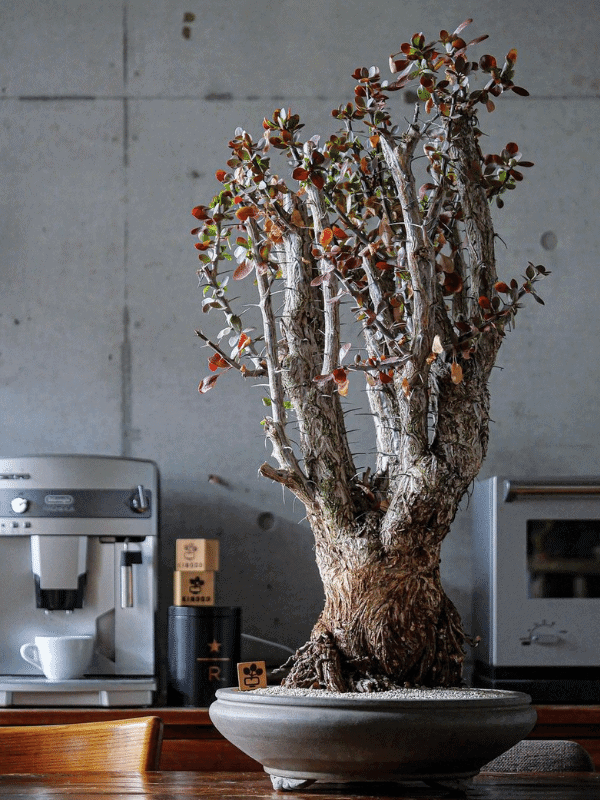
Ocotillo has long and thin stems is a vase shape, which have a unique appearance. Reaching 20 feet tall (6.0 meters) and 25 in spread (7.5 meters), it is often confused with a cactus, though it is not.
The stems have a marble pattern on them of gray blues and green shades, and they will tend to arch in the direction of the wind. It has small leaves on the ridges of the ribs, but with a twist.
They come and go according to how much water it has. So, at times you will have an almost barren plant, at others a foliage rich one. And they change color too!
They start off as green usually, but they can turn orange red. Then, in summer, you will see long and tubular red flowers at the tips of the tall stems.
Its long stems and their color display are a very original touch to gardens with a strong personality, in most informal styles, from xeric to urban.
Add the continuously changing look of this slender beauty and you get a great element of interest and even focal point.
8: Snake Plant (Sansevieria spp.)
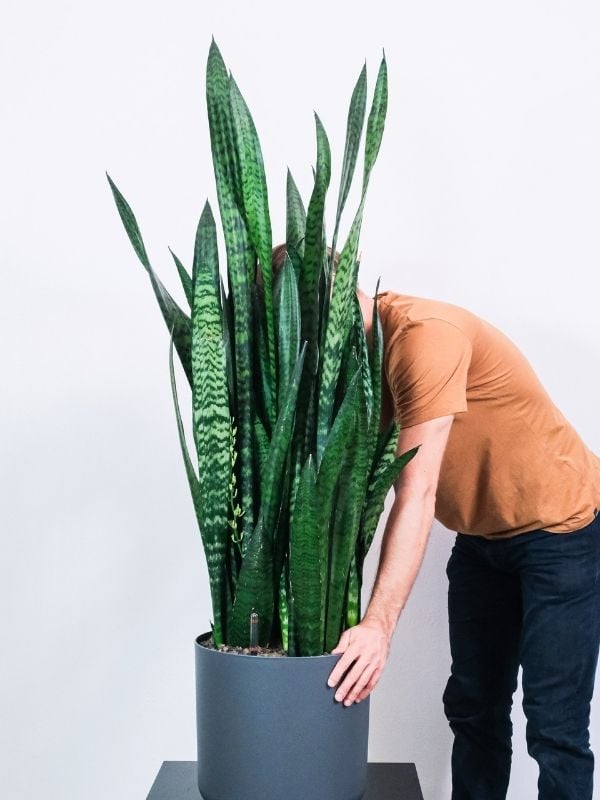
Snake plant stays short in pots, but in full soil it can grow to up to 8 feet in height (2.4 meters). This will depend on the species and on conditions, but when it is tall, it becomes even more attractive.
The long, slightly curved and blade like pointed leaves look up to the sky, with the many color combination of this plant. You can have green, yellow, silver and blue stripes and patches and patterns.
Add the very smooth, waxy surface and its famous elegance, and you get a real show stopper.
There are also prize winners in this genus, like the well loved variegated snake plant (Sansevieria trifasciata var. laurentii).
If you have a sansevieria as a house plant and it is becoming too big, and if you live in a hot country, move it to your garden and you will see it grow to a tall wonder.
It is so elegant and sculptural that it can look good in most designs, including formal ones. It is ideal for coastal gardens.
9: Tree Aloe (Aloidendron barberae, formerly Aloe bainesii)
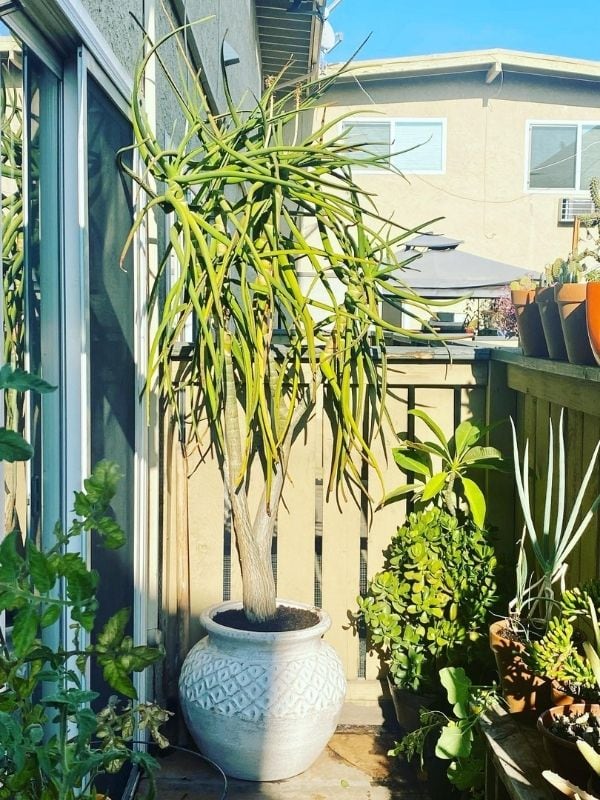
Tree aloe is a real giant of the succulent world coming from South Africa and Mozambique; it can reach 60 feet in height (18 meters) and 20 in spread (6.0 meters).
The stem is large, upright smooth, grayish and thick, and it looks like the trunk of a tree, maybe a plane. It then divides into tapering branches that end in huge rosettes.
The leaves are dark blue green and pointed, usually curving at the tips. It is also a fast grower, so you will get this majestic effect in a few years.
And as soon as it matures, it will give you panicles of bright orange tubular flowers hugh up above the foliage.
Tree aloe is not a common succulent, but if you are looking for an awe inspiring tree like giant go for it. As long as you have enough space, it will suit many designs, from desert, to xeric, to tropical and Mediterranean.
10: Crown of Thorns (Euphorbia milii)
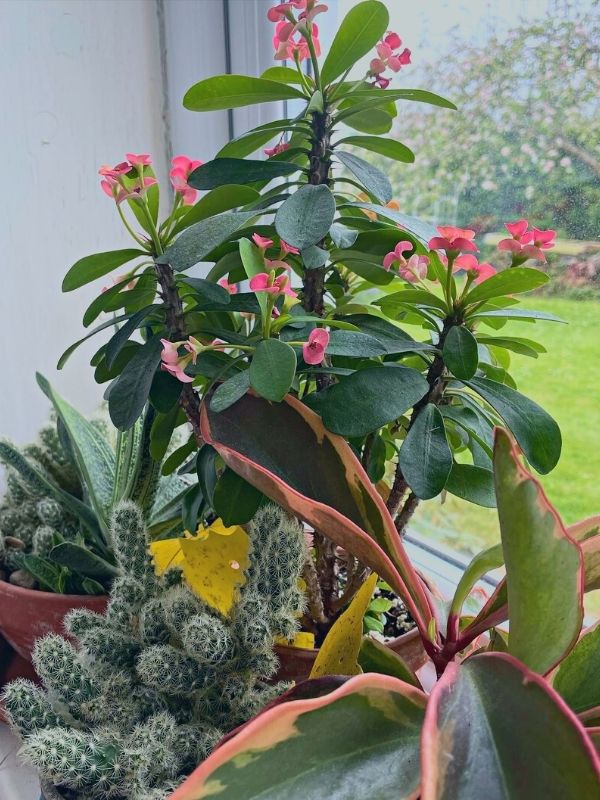
Crown of thorns will grow slowly but steadily to a tall shrub, up to 6 feet in height (1.8 meters), while it will only reach half this size from side to side.
This popular succulent has soft and spiked stems that look like wood, the green oval leaves are thick on the plant, making a wonderful backdrop for its famous bloom.
Actually the flowers are very small, but the two pea shaped and bright red bracts that surround them are spectacular.
They stay on for very long times and this plant will keep flowering all through the year in the right conditions.
And in winter, the foliage too may turn orange to wine red, giving you a blush when you most need it.
Crown of thorns is often grown as a container plant, but it will do a great job in hedges, borders and beds.
It provides color and structure all year round and it really requires very little care. It too is a winner of the Award of Garden Merit by the Royal Horticultural Society.
11: Elephant Bush (Portulacaria afra)
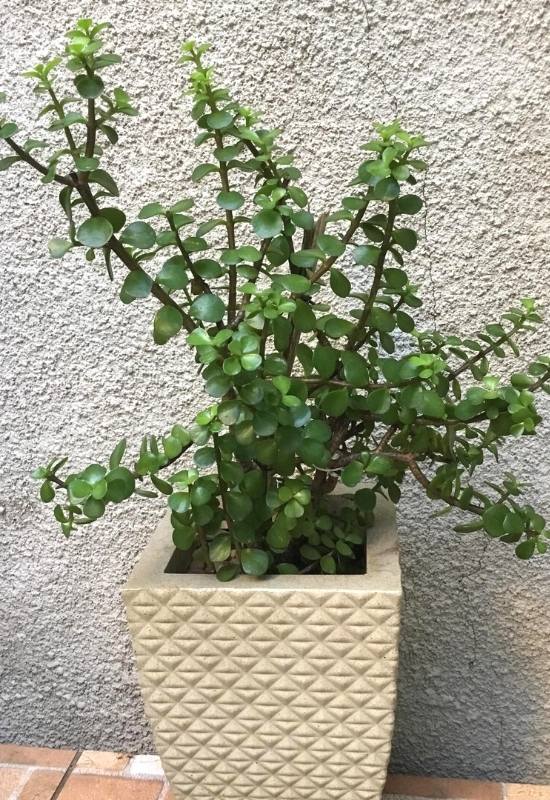
Elephant bush has a big name, quite suitable for this generous succulent that can grow a storey tall with virtually no care at all.
The name comes from the arching branches that look like the trunks of the famous pachyderms. They are soft but look rough and gray, however, when they are young, they look tender, shiny and purple.
Along them, you will find small, thick heart shaped leaves as green as jade and as waxy as well. They are edible, nutritious and medicinal as well – great for stoma upset, indigestion, and to heal insect bites on the skin.
The whole plant forms a shrub, which tends to tilt on one side and it can reach 12 feet tall (3.6 meters) and 6 feet in spread (1.8 meters).
Elephant bush needs little to no attention; it will survive most adversities including severe drought.
It is ideal for hedges, borders and containers; it can provide a reliable backdrop for other plants in courtyard, gravel, desert, exotic and Mediterranean gardens. The only drawback is that it will hardly ever bloom.
12: Baobab (Adansonia spp. especially Adansonia grandidieri)
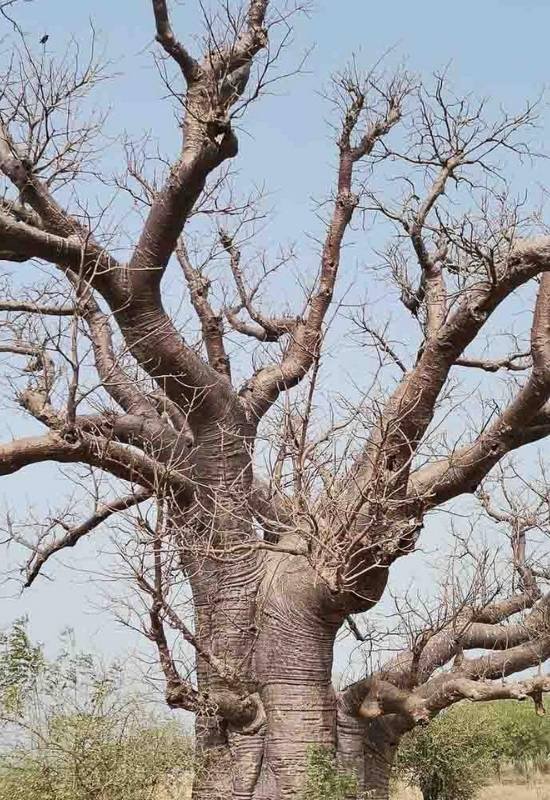
Baobab is the ultimate succulent giant, reaching 100 feet in height (30 meters) and their trunks can be 30 feet in diameter, 9.0 meters, like an average house!
There are six to eight species, including the iconic grandfather’s baobab (Adansonia grandidieri) with the massive upright orange brown stem and small clouds of green foliage on top. In fact, they grow so tall and huge that most of us thin they are trees.
But they are not! Baobab is an excellent source of food, with lots of nutrients and health benefits.
The blooms are spectacular, with white petals and a fluff of white pistils that look like a snow flake in the middle.
Some species, like grandidieri have pendulous flowers hanging from long petioles. The fruits are large and good to eat as well.
Baobab is not the average succulent you can grow in a small back garden, but if you really want to go over the top with tall succulents and you have both a large yard and lots of sunshine all year round, then it’s your best chance to wow any visitors, guests and even neighbors down the road!
Tall and Succulent Beauties for Your Garden
Cacti are famous for growing tall, but others succulents are not; many tend to stay short, even trail, spread or crawl.
But there are notable exceptions! And I am sure you have seen some striking examples, up to the colossal baobab.
But even if you need shorter and smaller plants, maybe to add height to your yard, or to create an exotic backdrop, you have met 12 of the very best, and tallest, of them all!

Written By
Adriano Bulla
After many years as an academic in London, Adriano Bulla became a writer, publishing books like A History of Gardening, Organic Gardening and Elements of Garden Design; he then decided to become a gardener, following his childhood dream, and has been following his dream writing and gardening professionally in Southern Europe, where he has specialized in new and innovative organic gardening fields and techniques, like permaculture, regenerative agriculture, food forests and hydroponics.
